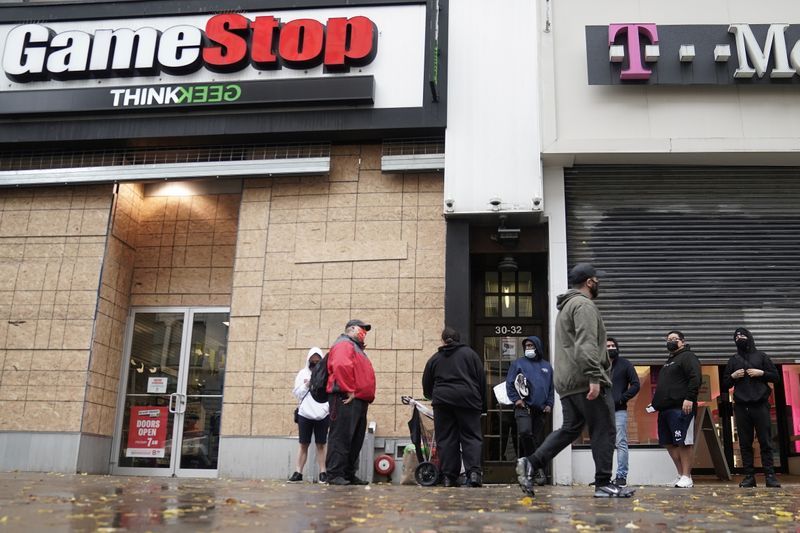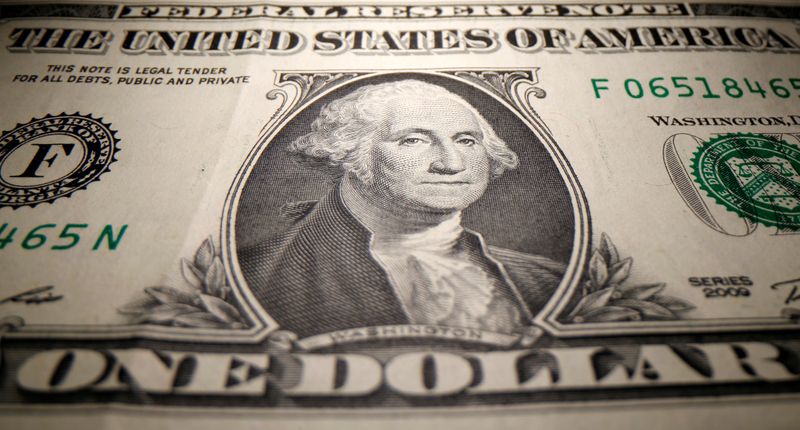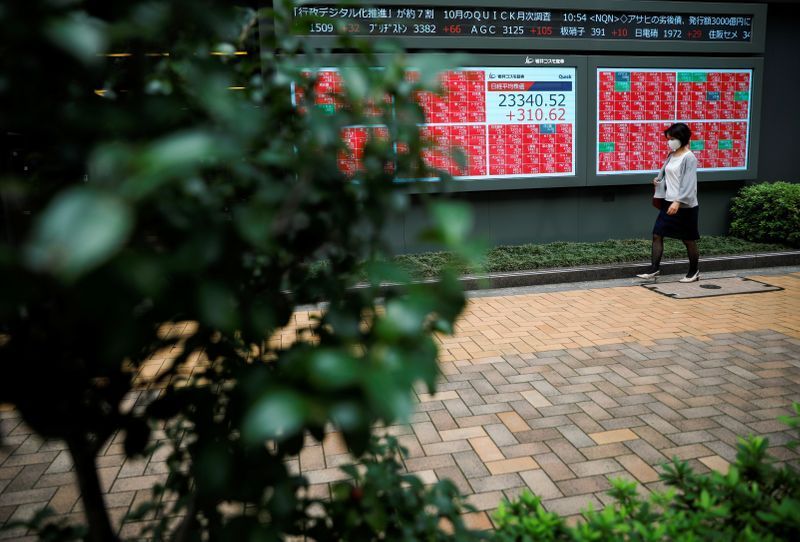WORLDWIDE: HEADLINES
Top global traders work to ease seafarer crisis due to coronavirus

LONDON – Over 300 leading companies said on Tuesday they would work together to help hundreds of thousands of merchant sailors stuck on ships for many months due to COVID-19 in a crisis that risks creating more dangers at sea.
About 90% of world trade is transported by sea, and coronavirus restrictions in many jurisdictions are affecting supply chains.
In December the U.N. General Assembly urged all countries to designate seafarers and other maritime personnel as key workers. Nevertheless, ship crews are still struggling to swap over with colleagues on land.
Shipping industry officials say many sailors are at breaking point and many have been at sea for longer than an 11-month limit laid out in a maritime labour convention.
The companies, which include shipping groups such as A.P. Moller Maersk, miners Anglo American and Rio Tinto, oil majors BP and Royal Dutch Shell as well as trading companies Cargill, Trafigura and Vitol, will boost information sharing as signatories of the “Neptune Declaration” initiative.
Full coverage: REUTERS
Time to pause? Wall St. grows wary of some stock bubbles

LONDON – Wall Street is abuzz about stock market bubbles as surges in the share prices of some loss-making firms, red-hot public markets and amateur investors chasing stocks at frothy valuations spark fears of a pullback.
A flood of money supply, ultra-low or zero interest rates and COVID-19 vaccine rollouts have sparked a ‘buy everything’ rally, helping world stocks add a whopping $33 trillion in value from their lows of last March.
The euphoria is evident in the small cap Russell 2000 index where its component companies with a negative operating profit outperformed the wider index by nearly 50 percentage points over the last year, a Reuters analysis of Refinitiv data showed.
“Pockets of the market have recently demonstrated investor behavior consistent with bubble-like sentiment,” Goldman Sachs analysts led by David Kostin wrote in a note.
Goldman noted the outperformance of negative earners was still a far cry from the 140 percentage points clocked during the dotcom boom of 1999-2000 and more in line with that of the immediate aftermath of the 2008 financial crisis.
While that might be of some comfort to investors, JPMorgan equity strategist Mislav Matejka expects “hot” areas of financial markets could be subject to bouts of profit taking which could spread to equity indices.
However, he said, those dips could be buying opportunities.
Full coverage: REUTERS
GameStop shares soar on short squeeze, then ease in wild trade session

NEW YORK – Shares of U.S. videogame retailer GameStop skyrocketed by 144% on Monday as short sellers scrambled to cover their positions in the stock, which then pared gains in a roller coaster session that featured nine trading halts for volatility.
Options activity also surged in the stock, which had gained 245% so far this year as of Friday’s close. It closed Monday’s session up 18% with $16.7 billion worth of GameStop shares traded — more than triple the company’s actual stock market value.
Short sellers had bet against the stock because they viewed GameStop’s retail business model as outdated. But GameStop shares began to rise after the video game retailer’s announcement on Jan. 11 about appointments to its board to double down on digital sales.
The buying frenzy as short sellers rushed to cover positions enticed retail investors to pile on in hopes of riding the stock’s momentum higher.
“Many traders leveraged positions betting the stock would go down and as it became a hot topic on social media and saw artificial demand created among short sellers, there was fuel added to the fire,” said Jake Wujastyk, chief market analyst at TrendSpider, a technical analysis software company for traders.
“Traders were being shopped out of their short positions and forced to buy back and a significant amount of artificial demand was created,” Wujastyk added.
Short sellers typically borrow and sell shares they expect will fall, hoping to buy them back at a lower price, pay back the loan and pocket the difference.
Full coverage: REUTERS
WORLDWIDE: FINANCE / MARKETS
Oil prices edge lower amid doubts over U.S. stimulus, rising coronavirus cases

TOKYO – Oil prices eased on Tuesday, giving up some of the previous session’s gains, as hopes for rapid approval of new U.S. economic stimulus faded while new coronavirus infections around the world mount up.
Brent crude was down 15 cents at $55.73 by 0135 GMT, having risen nearly 1% on Monday. U.S. crude was also lower, dropping 5 cents to $52.72, after declining 1% in the previous session.
Have recently hit 11-month highs, oil is caught between lingering doubts over any recovery in demand as the pandemic continues to rage, offset by optimism for more stimulus from the newly installed Biden administration in the United States to support economic growth as vaccines are rolled out.
But Biden administration officials are still trying to convince Republican lawmakers of the need for more stimulus, raising questions over when it will be approved.
“Through 2021, major supply and demand risks remain that threaten to jolt fundamentals into a much tighter or looser market,” Citigroup said in a note.
Full coverage: REUTERS
Dollar firm as jittery markets look to Fed for catalysts

SINGAPORE – The U.S. dollar steadied on Tuesday as rising coronavirus cases and doubts over the speed and size of U.S. stimulus tempered financial markets’ upbeat mood, while investors were also cautious ahead of the Federal Reserve’s review later in the week.
In overnight trading, bonds rallied, hard-running U.S. equity markets cooled and the cautious move into safer assets lifted the dollar index a little bit to 90.353, which is roughly in the middle of a range it has kept for the past two weeks. [US/][.N]
The euro and yen are likewise hemmed in, with the euro unable to break resistance around $1.2190 while the continent grapples with new COVID-19 infections and fresh lockdowns.
The common currency slipped slightly overnight to $1.2142 and held there in early Asia trade. The yen was steady at 103.76 per dollar, while the risk-sensitive Australian and New Zealand dollars softened marginally.
“Markets have come a long way on the hope that COVID goes away and governments spend a lot of money,” said Westpac currency analyst Imre Speizer.
Full coverage: REUTERS
Asian stocks set for soft start, dollar mostly steady

NEW YORK – Asian stocks came under pressure on Tuesday as worries about U.S. stimulus and surging coronavirus infections led to a mixed Wall Street session, while the dollar consolidated overnight gains.
The choppy trade reflected concerns about new strains of the deadly virus, along with uncertainty about the $1.9 trillion U.S. fiscal stimulus plan that has hit opposition from Republicans in Congress.
Those factors tempered earlier optimism stoked by the roll-out of vaccines and anticipation that new U.S. stimulus would give the world economy a much-needed fiscal shot in the arm.
Jarrod Kerr, chief economist at Kiwibank in Wellington, New Zealand said equities also were now taking a breather after a strong bull run last week, but noted sentiment was still upbeat.
“Risk appetite has clearly improved,” Kerr said. “Central banks and governments need to keep their foot on the accelerator.”
E-mini futures for the S&P 500 were flat early in the Asian day. Japan’s Nikkei opened down 0.4% and New Zealand’s was 0.5% lower. The Australian dollar rose 0.04% versus the greenback at $0.771. Australian stock markets were closed for a national public holiday.
Full coverage: REUTERS



